In the world of herbs, few are as ancient, aromatic, and versatile as hyssop (Hyssopus officinalis). Revered since biblical times and cherished in traditional European herbal medicine, hyssop is making a strong comeback in modern American gardens. Known for its healing properties, striking blue-purple flowers, and pollinator-friendly nature, this Mediterranean native is both beautiful and beneficial.
Whether you’re a home gardener, an herbal tea enthusiast, or a natural wellness advocate, hyssop offers a wealth of uses—from flavoring dishes and soothing coughs to attracting bees and butterflies. This article explores everything you need to know about hyssop: its origins, growing tips, health benefits, and how to incorporate it into your daily life.
1. What Is Hyssop? A Historical Herb with Modern Appeal
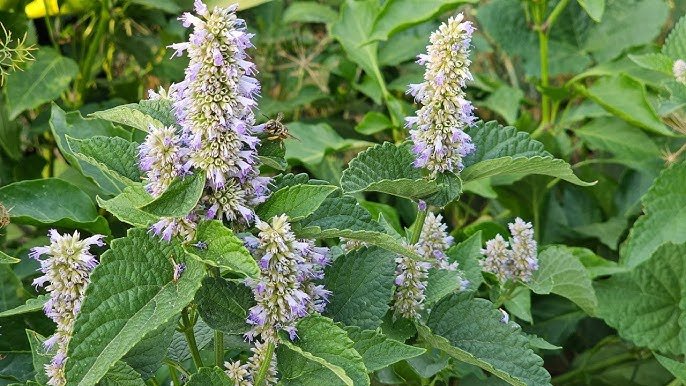
Hyssop is a perennial herb belonging to the mint family (Lamiaceae), which also includes lavender, thyme, and sage. It grows 1 to 2 feet tall, with woody stems, narrow green leaves, and spikes of vibrant blue, pink, or white flowers. Its strong, slightly bitter, minty flavor and medicinal properties have made it a staple in herbal medicine for centuries.
Historically, hyssop was used by the ancient Greeks and Romans for respiratory ailments and purification rituals. It’s mentioned multiple times in the Bible—often symbolizing cleansing and protection. In modern America, herbalists appreciate hyssop for its antiseptic, antiviral, and expectorant qualities, while gardeners value it as a low-maintenance pollinator magnet that thrives in sunny spots.
2. Why Hyssop Belongs in Every American Herb Garden
If you’re looking for a multi-purpose herb that’s easy to grow and visually stunning, hyssop checks every box. Here’s why it’s becoming a favorite among U.S. gardeners:
- Low Maintenance: Hyssop thrives in poor, well-drained soil and doesn’t require heavy watering—perfect for drought-prone regions.
- Beautiful Blooms: Its bright flowers bloom all summer, adding color to borders and herb beds.
- Pollinator-Friendly: Bees, butterflies, and hummingbirds adore hyssop, making it a great companion for eco-friendly and pollinator gardens.
- Compact Growth: Ideal for small spaces, containers, or raised garden beds.
- Multi-Use Herb: Fresh or dried, hyssop can be used in teas, cooking, and natural remedies.
Its resilience and beauty make it perfect for American climates, from the dry Southwest to temperate East Coast regions.
3. How to Grow Hyssop Successfully in Your Garden
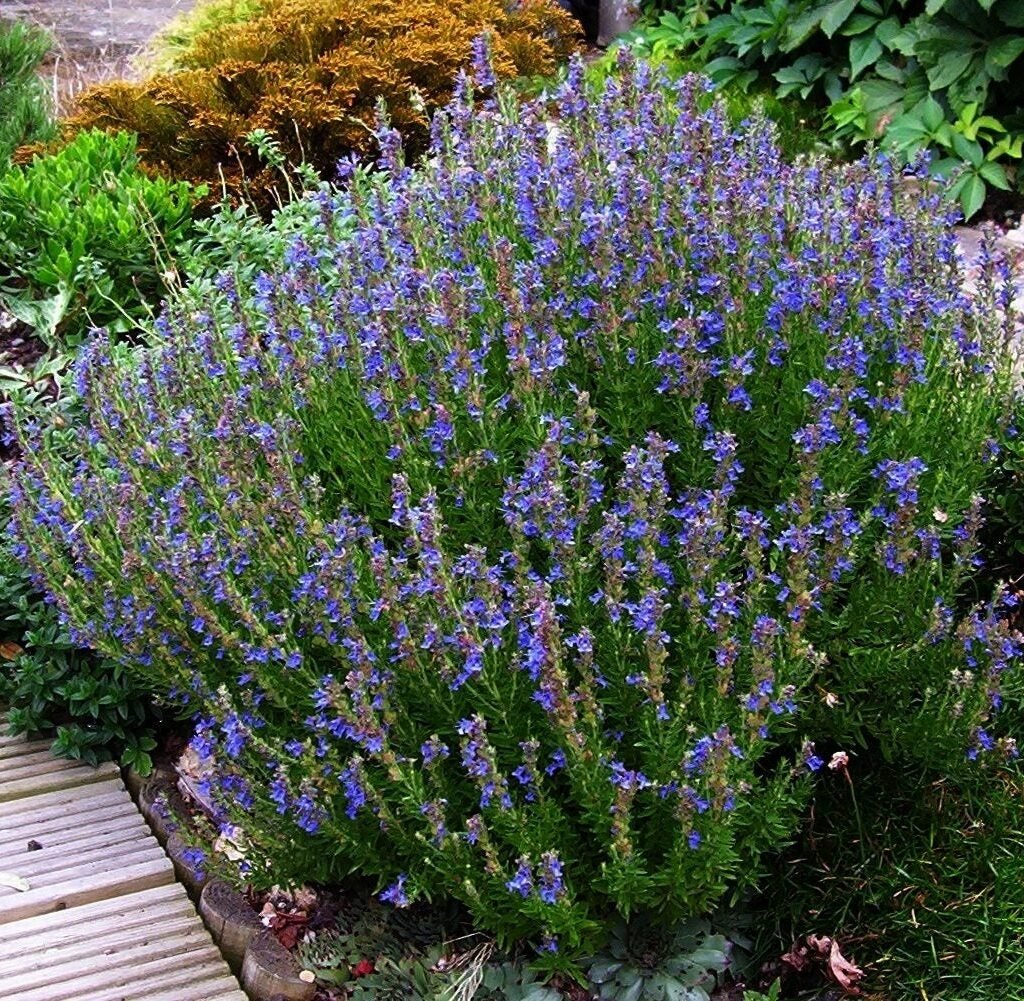
Planting Location and Soil
Hyssop loves full sun and well-drained soil. Avoid overly rich or damp soil—it prefers slightly dry, sandy conditions similar to its Mediterranean home. If you’re planting in clay-heavy soil, add sand or gravel to improve drainage.
Planting from Seed or Cuttings
You can start hyssop from seeds indoors in early spring or directly sow them outdoors after the last frost. Alternatively, cuttings from mature plants root easily in moist soil or water.
- Spacing: Plant seedlings about 12–18 inches apart.
- Watering: Keep soil lightly moist during establishment, then reduce watering once plants mature.
- Pruning: Trim regularly to encourage bushy growth and prevent woodiness.
Container Growing
If you have limited space, hyssop grows well in pots. Use a terra-cotta container with drainage holes and a mix of potting soil and sand. Place in a sunny location—balconies or patios are ideal.
Overwintering
Hyssop is hardy in USDA zones 4–9. In colder areas, mulch around the roots to protect them from frost, or bring container plants indoors during winter.
4. Harvesting and Storing Hyssop
Hyssop leaves and flowers can be harvested anytime during the growing season, but they’re most flavorful just before the flowers fully open.
- Use sharp scissors or pruning shears to snip stems.
- Hang bunches upside down in a cool, dry place for about a week.
- Once dry, strip leaves and flowers from stems and store them in airtight jars away from sunlight.
Dried hyssop retains its aroma and potency for several months, perfect for making herbal teas or seasoning dishes through winter.
5. Hyssop in the Kitchen: A Unique Culinary Herb

Though less common in modern American cuisine, hyssop’s distinct flavor—a mix of mint, sage, and lavender—adds a refreshing twist to many recipes. Use it sparingly, as its taste can be quite strong.
Culinary Uses:
- Add fresh leaves to soups, stews, and meat marinades for a subtle minty note.
- Infuse vinegars, honey, or oils with hyssop for gourmet flavor.
- Mix dried hyssop into herbal tea blends, especially with lemon balm or chamomile.
- Use the flowers as edible garnishes for salads or desserts.
Tip: Combine hyssop with other Mediterranean herbs like thyme, oregano, and rosemary for a flavorful seasoning blend.
6. Medicinal Benefits of Hyssop: Nature’s Healing Ally
Hyssop has a long reputation as a natural remedy for respiratory and digestive health. It contains beneficial compounds like tannins, flavonoids, and essential oils (pinocamphone, camphor, and limonene) that give it antiseptic and expectorant qualities.
Traditional and Modern Uses:
- Respiratory Support:
Hyssop tea or steam inhalation helps relieve coughs, bronchitis, and sore throats by clearing mucus and soothing the lungs. - Digestive Health:
The herb aids digestion, reduces bloating, and can ease mild stomach cramps. - Immune Boosting:
Rich in antioxidants, hyssop supports overall immunity and helps the body fight infections. - Topical Uses:
Diluted hyssop essential oil can be used in balms and ointments for treating minor wounds or skin irritations.
Note: Hyssop essential oil should never be used undiluted or during pregnancy, as it can be too potent. Always consult a healthcare provider before using herbs medicinally.
7. Hyssop Tea Recipe for Relaxation and Wellness
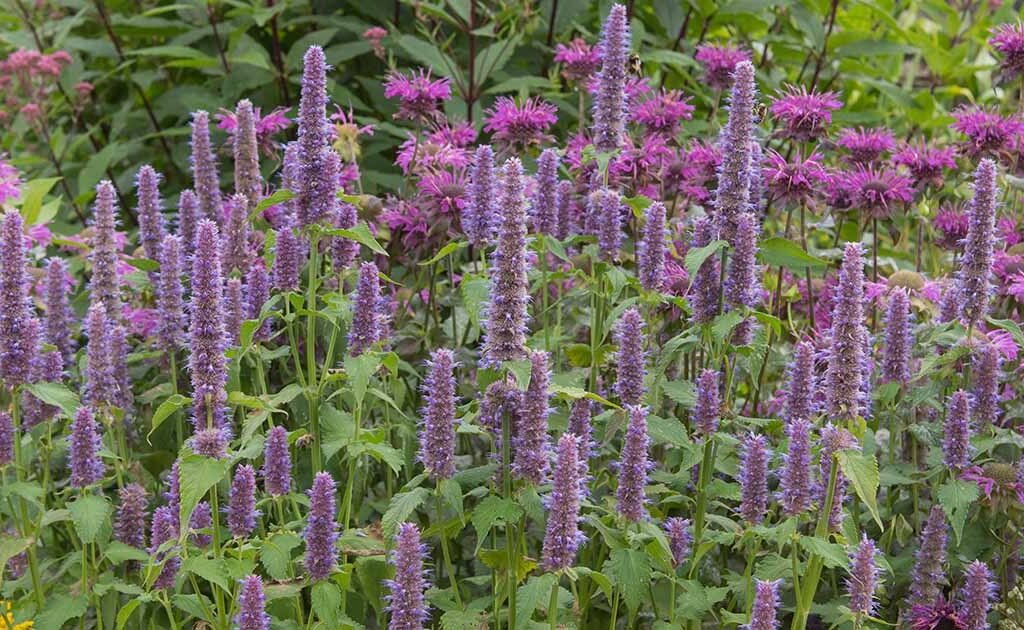
Here’s a simple and soothing hyssop tea recipe you can make at home:
Ingredients:
- 1 teaspoon dried hyssop leaves or flowers
- 1 cup boiling water
- Optional: honey, lemon, or mint for flavor
Instructions:
- Place hyssop in a cup or teapot.
- Pour boiling water over it and cover.
- Let steep for 10 minutes.
- Strain and sweeten if desired.
Sip warm to soothe your throat, relax your mind, or support digestion after meals.
8. Hyssop in Landscaping and Pollinator Gardens
Beyond its medicinal and culinary uses, hyssop makes a fantastic ornamental plant. Its vibrant blossoms and aromatic foliage add beauty and biodiversity to your outdoor space.
Design Ideas:
- Plant hyssop along borders, walkways, or herb spirals for a burst of color and fragrance.
- Pair it with lavender, sage, or echinacea for a pollinator-friendly garden.
- Use it in rock gardens or Mediterranean-themed landscapes where drought tolerance is key.
Pollinators such as bees and butterflies love hyssop, making it a valuable addition for gardeners supporting local ecosystems.
9. Preserving and Using Hyssop Year-Round

Hyssop’s benefits don’t end with summer. You can enjoy it year-round in various forms:
- Dried Leaves: For teas, sachets, and seasoning.
- Hyssop Oil: For aromatherapy and topical blends (with caution).
- Herbal Syrups: Combine with honey for homemade cough syrup.
- Potpourri or Sachets: Dried flowers add fragrance to drawers and closets.
These simple preparations keep the essence of hyssop alive long after the growing season ends.
Conclusion: The Timeless Magic of Hyssop
From ancient temples to modern American backyards, hyssop remains a symbol of health, purity, and healing. This resilient herb combines beauty, function, and heritage—offering fragrant blooms for pollinators, flavor for the kitchen, and soothing remedies for wellness enthusiasts.
Whether you plant it for its vibrant color, medicinal benefits, or aromatic charm, hyssop is a timeless treasure worth growing. In a world turning back to natural living and herbal wellness, this ancient Mediterranean herb is finding new roots in American soil—proving that sometimes, the best remedies truly grow in our own gardens.
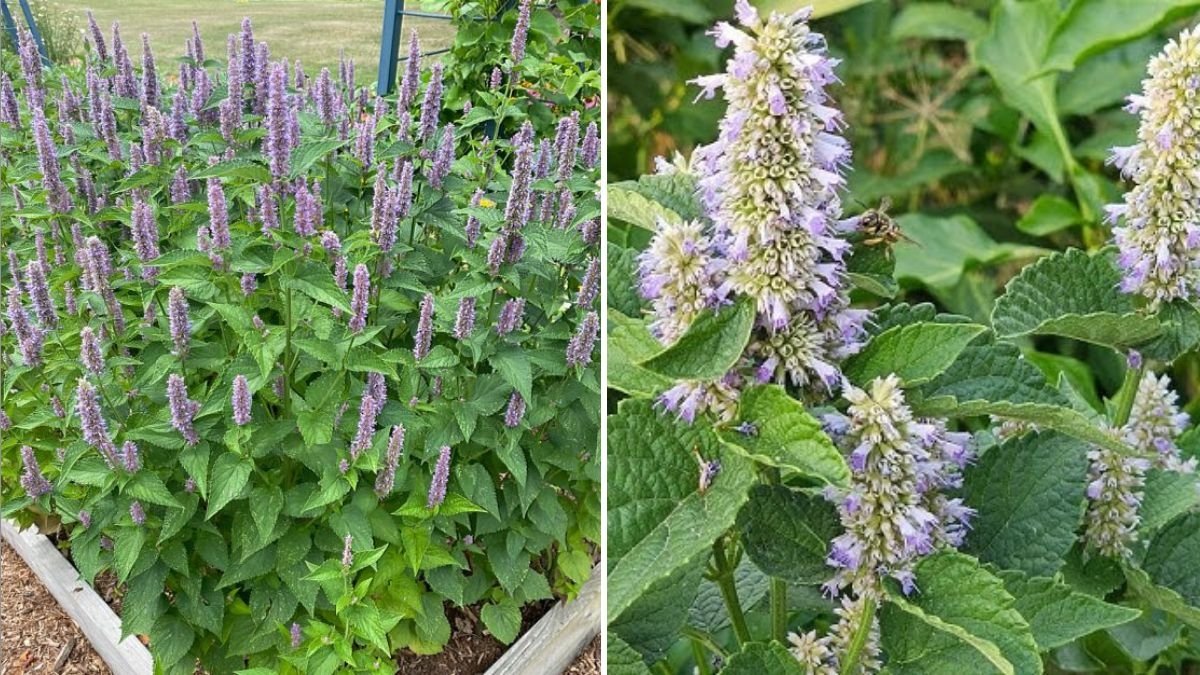



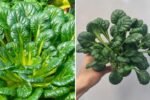

Leave A Comment